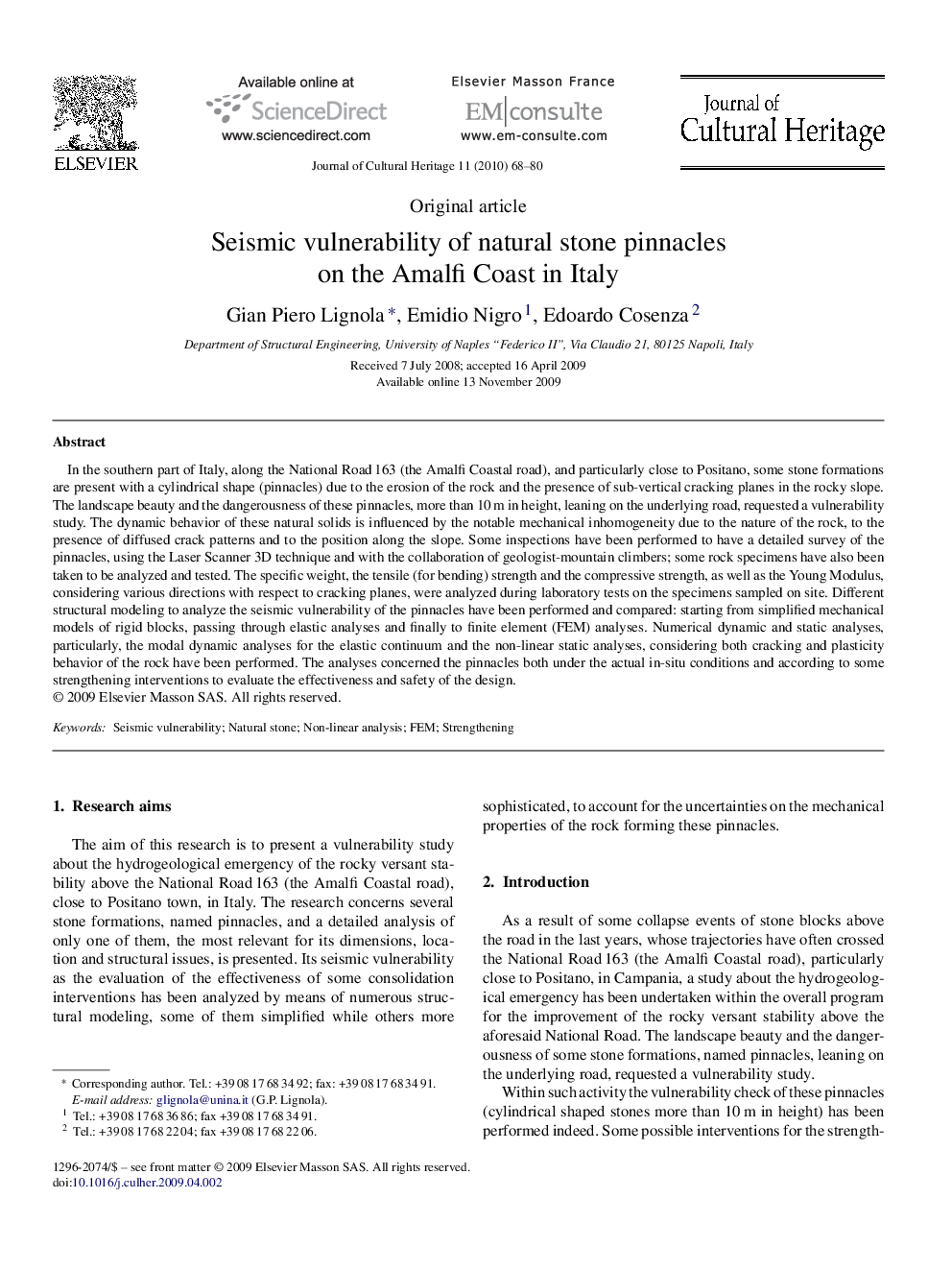| Article ID | Journal | Published Year | Pages | File Type |
|---|---|---|---|---|
| 1038467 | Journal of Cultural Heritage | 2010 | 13 Pages |
In the southern part of Italy, along the National Road 163 (the Amalfi Coastal road), and particularly close to Positano, some stone formations are present with a cylindrical shape (pinnacles) due to the erosion of the rock and the presence of sub-vertical cracking planes in the rocky slope. The landscape beauty and the dangerousness of these pinnacles, more than 10 m in height, leaning on the underlying road, requested a vulnerability study. The dynamic behavior of these natural solids is influenced by the notable mechanical inhomogeneity due to the nature of the rock, to the presence of diffused crack patterns and to the position along the slope. Some inspections have been performed to have a detailed survey of the pinnacles, using the Laser Scanner 3D technique and with the collaboration of geologist-mountain climbers; some rock specimens have also been taken to be analyzed and tested. The specific weight, the tensile (for bending) strength and the compressive strength, as well as the Young Modulus, considering various directions with respect to cracking planes, were analyzed during laboratory tests on the specimens sampled on site. Different structural modeling to analyze the seismic vulnerability of the pinnacles have been performed and compared: starting from simplified mechanical models of rigid blocks, passing through elastic analyses and finally to finite element (FEM) analyses. Numerical dynamic and static analyses, particularly, the modal dynamic analyses for the elastic continuum and the non-linear static analyses, considering both cracking and plasticity behavior of the rock have been performed. The analyses concerned the pinnacles both under the actual in-situ conditions and according to some strengthening interventions to evaluate the effectiveness and safety of the design.
